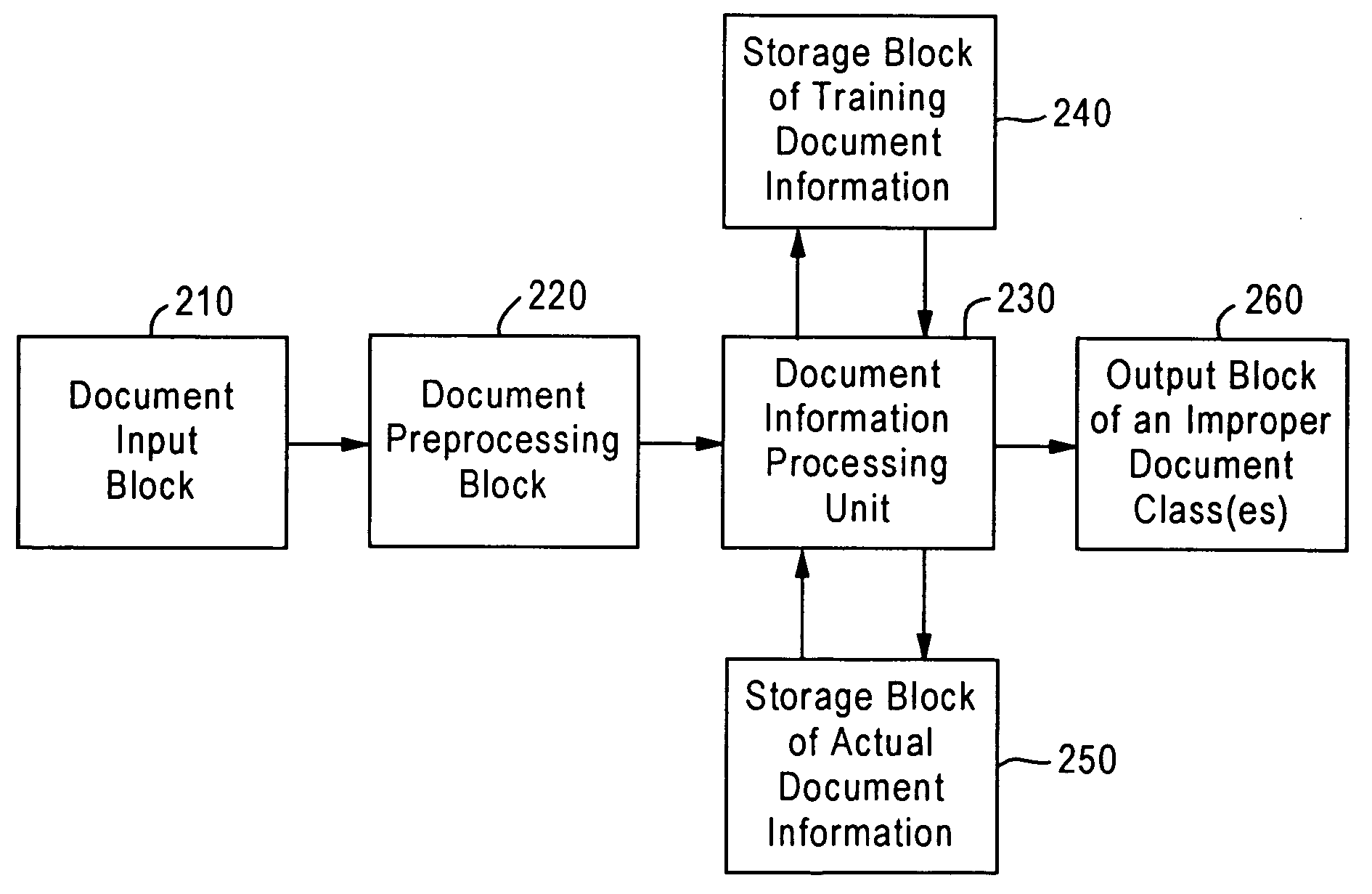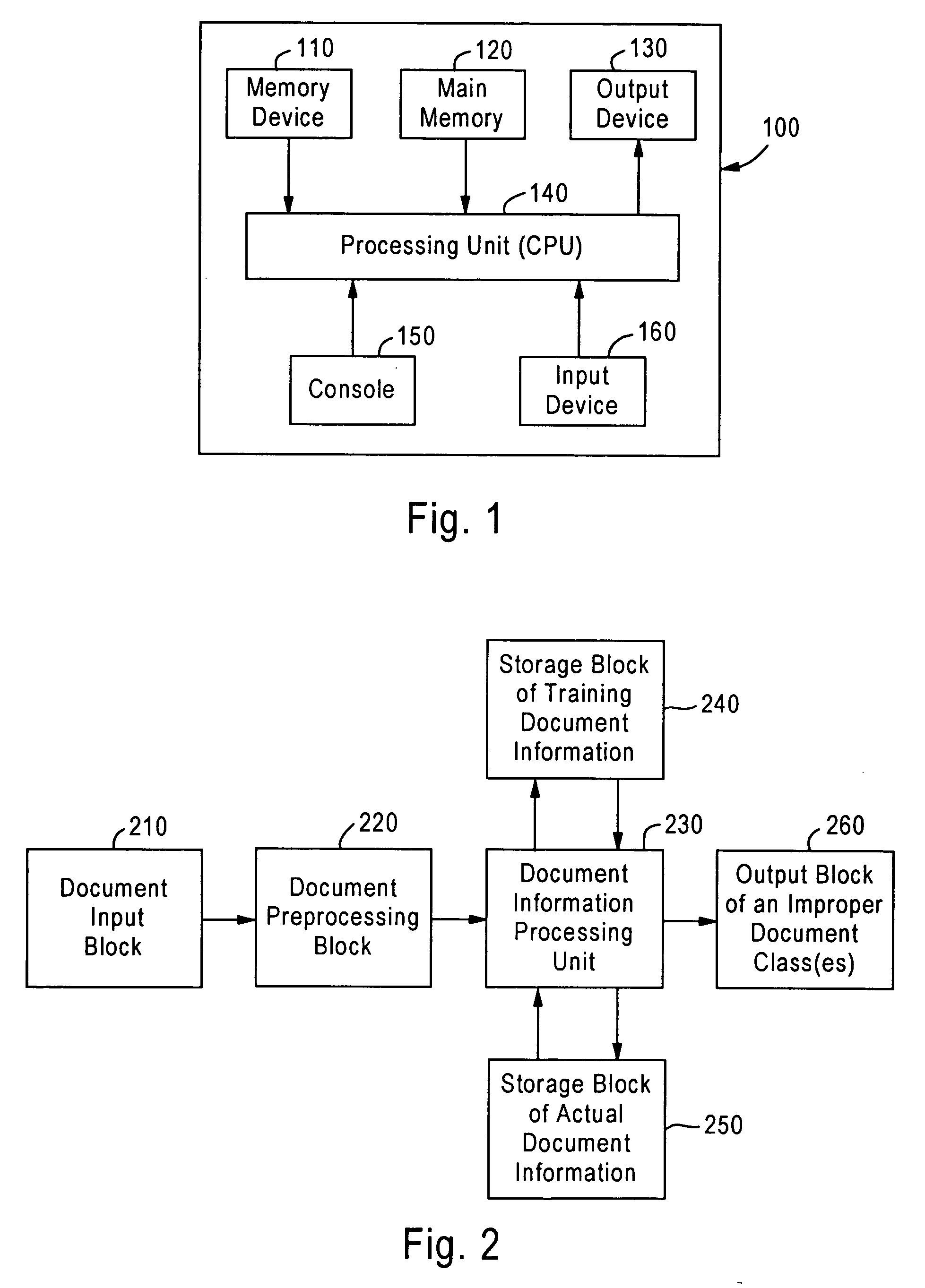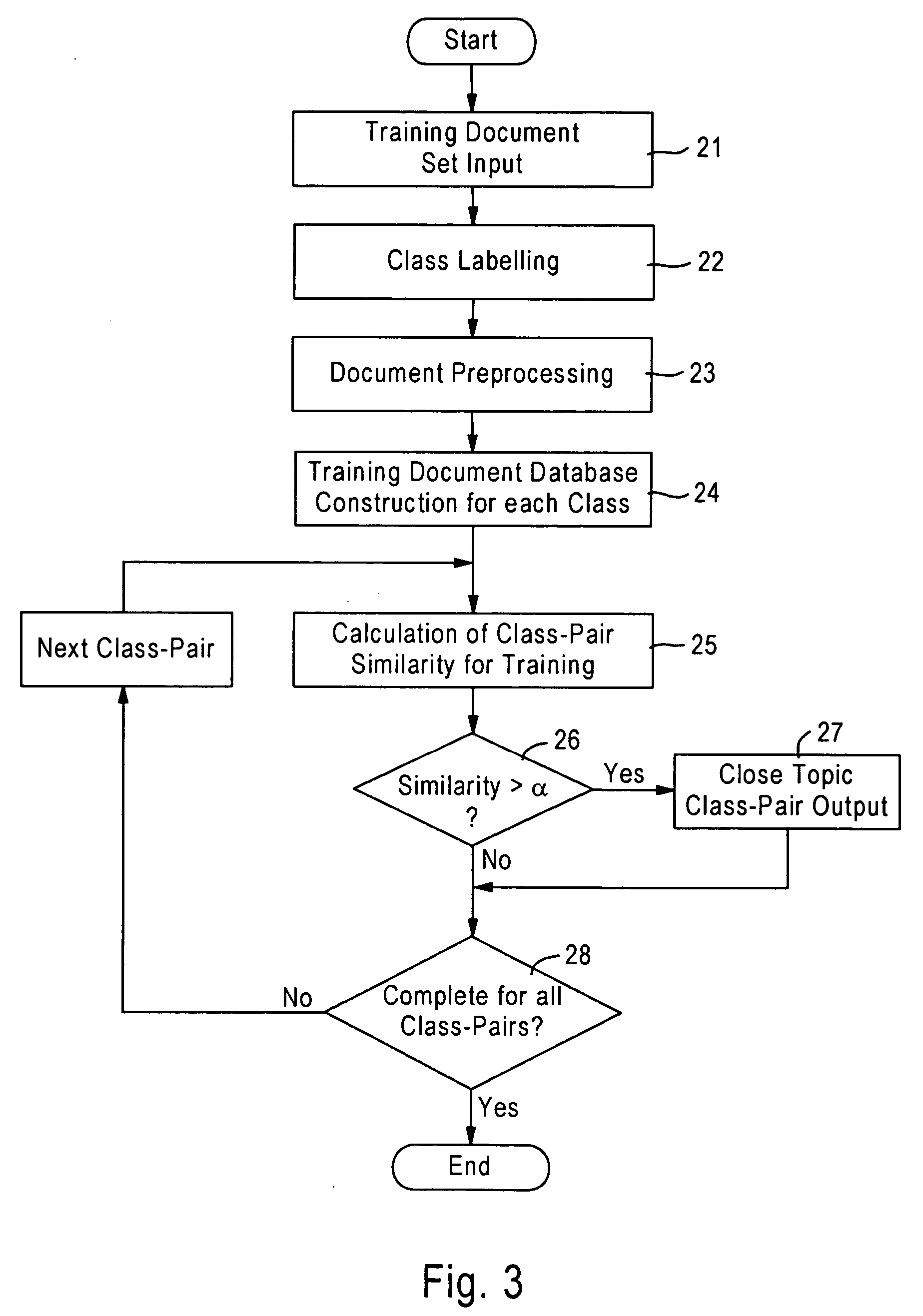Classification evaluation system, method, and program
a classification evaluation and class model technology, applied in the field of classification evaluation system, method and program, can solve the problems of class model deterioration, low detection accuracy, and low recall and precision
- Summary
- Abstract
- Description
- Claims
- Application Information
AI Technical Summary
Benefits of technology
Problems solved by technology
Method used
Image
Examples
Embodiment Construction
[0028]FIG. 1 is a diagram including housing 100 containing a processor arrangement including a memory device 110, a main memory 120, an output device 130, a central processing unit (CPU) 140, a console 150 and an input device 160. The central processing unit (CPU) 140 reads a control program from the main memory 120, and follows instructions inputted from the console 150 to perform information processing using document data inputted from the input device 160 and information on a training document and an actual document stored in the memory device 110 to detect a close topic class-pair, a deteriorated document class, etc. and output these to the output device 130.
[0029]FIG. 2 is a block diagram including a document input block 210; a document preprocessing block 220; a document information processing unit 230; a storage block 240 of training document information; a storage block 250 of actual document information; an output block 260 of an improper document class(es). A set of docum...
PUM
 Login to View More
Login to View More Abstract
Description
Claims
Application Information
 Login to View More
Login to View More - R&D
- Intellectual Property
- Life Sciences
- Materials
- Tech Scout
- Unparalleled Data Quality
- Higher Quality Content
- 60% Fewer Hallucinations
Browse by: Latest US Patents, China's latest patents, Technical Efficacy Thesaurus, Application Domain, Technology Topic, Popular Technical Reports.
© 2025 PatSnap. All rights reserved.Legal|Privacy policy|Modern Slavery Act Transparency Statement|Sitemap|About US| Contact US: help@patsnap.com



